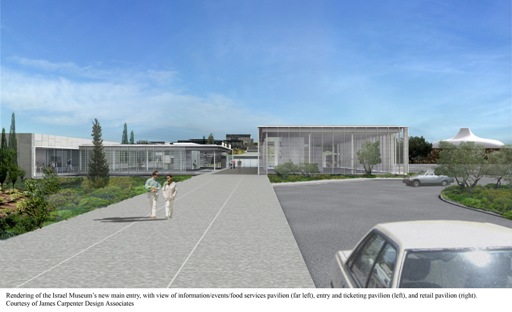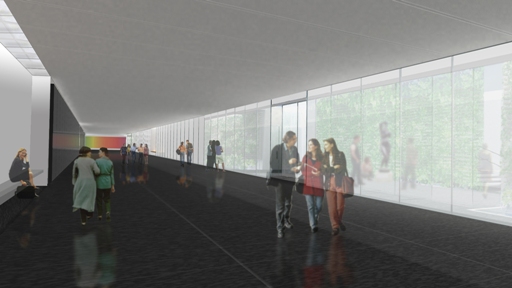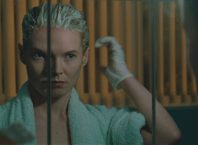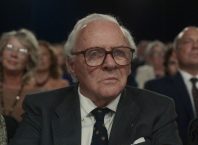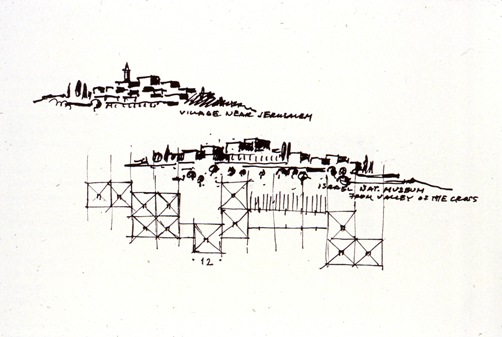
Any visit to Jerusalem heightens my awareness of history, walking through the city I feel like a wanderer through visible layers of time. On my most recent trip, to see the renovated Israel Museum, I had the privilege of seeing history in the making, as the buildings and grounds were being prepared for the inauguration of the renewed campus scheduled to take place tomorrow, July 26, 2010.
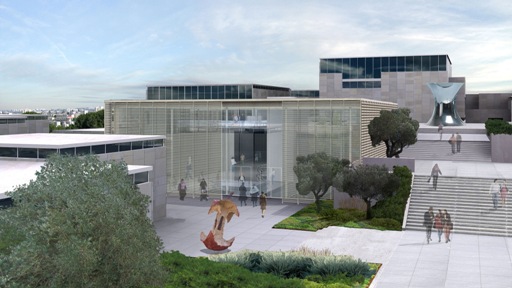
As of last Wednesday, the museum campus still resembled a construction site, with heavy machinery, taped up glass and the large mounds of earth that always seem to accrue. Welcoming the group of journalists, who gathered in the new glass entry pavilion, was James S. Snyder, Anne and Jerome Fisher Director of the Israel Museum. Snyder recalled the “momentous moment in April 1996” when he came to see the museum, saying, “I felt the power of this place that day and thought: this is a place that deserves a re-dressing.” He explained that the work would continue while the tour was conducted: “they need the time.”
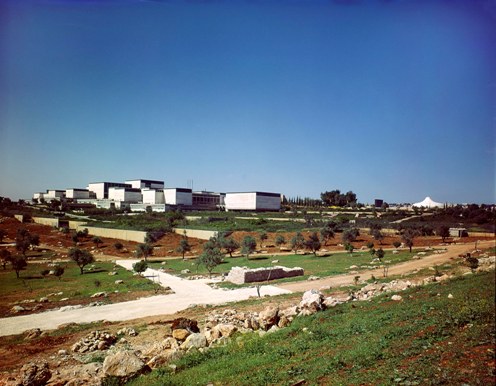
The extent of the renewal project is impressive. Originally designed by Alfred Mansfield and Dora Gad, the museum has grown enormously since it opened in 1965 – both in terms of its collections and the architectural footprint, which increased ten-fold. The current renovation, begun in 2007, adds another 15% to the footprint, while doubling the available gallery space. Snyder reported that it has all been “accomplished within the budget of 100 million dollars – this is not the norm in the museum world,” adding that in the recent economic climate “it might be a model for others.”
What is most striking about the museum’s new look is that it is almost transparent – there is a sense of continuity in the architecture and landscaping, the changes feel organic, the natural evolution of the original vision. Visitors to the museum will first encounter three new glass pavilions which will house the information and ticketing office, bookstore and a café. Each building is shaded by louvers which allow the interior to be bathed in a soft light, while sheltered from the harsh Mediterranean sun. The buildings merge with the landscape to create a dialogue of structure and light, moving in and out of the buildings one becomes part of this ongoing conversation.
The original access to the museum remains the Carter Promenade, which James Carpenter (James Carpenter Design Associates of New York designed the new facilities) aptly described as “beautiful but difficult.” Leading our group up the many stairs, Carpenter described the “close to being finished” alternative route of passage that has been created beneath the promenade. Visitors will now have the option of following this new route, which will have an all glass wall on its west side that looks out to the landscaped courtyards that flank the Carter Promenade. A channel of cast glass runs from the top of the walkway along this side of the promenade, water tumbling down the path will reflect the sunlight into the path below. The new passage ends at the last courtyard, where visitors can enter the main museum through the elevator.
Walking up the stairs one reaches Crown Plaza, where Anish Kapoor’s Turning The World Upside Down, Jerusalem, a site specific installation commissioned for the museum, provides a different perspective on the landscape. Visitors entering from the courtyard below will be greeted by Olafur Eliasson’s Whenever the rainbow appears, a series of 360 monochromatically painted canvases, which from a distance appears to be a continuum of color. I walked over a plywood plank placed on the still-wet cement to enter the main building. The Israeli firm Efrat-Kowalsky Architects, oversaw the re-design of the existing buildings, a project that Meira Kowalsky described as one of “researching and analyzing the needs of the museum…in dialogue with the original buildings.”
Entering the museum is the start of another journey, one that will continue in time. Although I look forward to many more visits to the Israel Museum, there was a unique excitement to this first visit, when construction was still very much in process. I strongly encourage everyone to make an effort to see it now, in these first days, and become part of the history of the place.
The museum has extended its opening hours this week and will be open July 26 – 28 from 10am to 9pm and July 29th from 10am to 1am (July 30th), with tours of the new exhibits, art workshops for children and live music in the galleries. Shalom Hanoch will perform an evening concert in the Billy Rose Art Garden on July 27, and the celebrations will reach their height on Thursday, July 29 – Yehudit Ravitz will perform in the Art Garden, followed by Contact Point, a nighttime museum experience that includes encounters between artists, writers and performers with artworks in the galleries and throughout the campus, presented in conjunction with the Jerusalem Season of Culture. For additional information, call 02-6708811, or visit the museum website. The museum is located on Ruppin Boulevard, near the Knesset.
AYELET DEKEL

